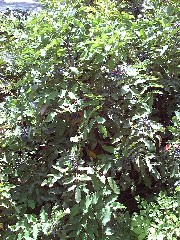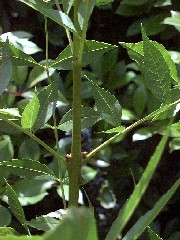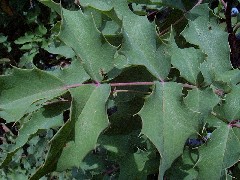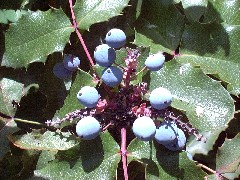Oregon Grape
Mahonia aquifoliumBerberidaceae
Podcast Script
Classification:
Angiosperm, Dicot, evergreenSize:
Oregon Grape can grow to a maximum height of eight feet but the range is typically three to six feet at maturity.Identifying Features:
Oregon Grape has shiny green, coarse, pointed leaves as well as yellow flowers and striking blue fruit. The primarily upright plant grows at an average rate during its long life-span.Location/Habitat:
The plant is primarily found on the western coast of the United States, hence its state flower status in Oregon, as well as in some states on the eastern coast.Oregon grape primarily grows on slopes in the elevation range of zero to 7000 feet in California.
Distribution Across the United States and California
Oregon grape was introduced to England in 1823 where it is found in woods and hedgerows.
Because of its versatility in terms of water, sun, and soil requirements, Oregon Grape can be found in both woodland and urban areas, where it is often used for landscaping.
Flower/Fruit/Reproduction:
The clusters of yellow flowers bloom from April to early May and the racemes are two to three inches long. These flowers are hermaphroditic, self-fertile, and pollinated by insects.The 0.3 to 0.5 inch diameter berries are blue and grow in clusters similar to the grapes after which the common name is derived, though the species itself is not related to grapes.
Water/Sun Requirements:
Oregon Grape requires, according to the United States Department of Agriculture, a precipitation of 25 millimeters, at minimum, to 45 millimeters, at maximum.The plant requires a slightly acidic to neutral pH range of five to eight.
Mahonia aquifolium is quite tolerant of shade and thus can often be found under taller trees as well as in direct sunlight.
Special Adaptations:
Oregon Grape can grow in sandy, loamy, or clay soils, has high drought tolerance, and is capable of growing in the shade. The plant can also withstand low temperatures up to -43ºF, although it dislikes strong winds.Other Info:
A common synonym for Mahonia aquifolium is Berberis aquifolium.The ability of Oregon Grape to form dense thickets makes it a favorite among landscapers but an enemy to those low-growing plants it excludes in the forest.
Oregon Grape is often implemented in medicine as an alterative, that which causes a gradual improvement in the body; as a stimulant for the kidney and gallbladder; as a bactericide for its berberine content; as a cholagogue, that which aids in bile secretion; a diuretic, that which increases the release of urine; a laxative; and, finally, a tonic.
Dyes from Oregon Grape include yellow, from the inner bark and roots, and dark green/blue from the berries.
The flowers can be eaten raw or used to make lemonade. The berries can be eaten raw or used to make jelly.
Reference Sources/Links:
PLANTS Profile for //Mahonia// aquifolium . USDA, NRCS. 2007. The PLANTS Database (http://plants.usda.gov, 24 May 2007). National Plant Data Center, Baton Rouge, LA 70874-4490 USA.Introduced Shrubs. The Wildlife Trusts (http://www.wildlifetrusts.org/ ). Accessed 31 May 2007.
Grape, Mountain - Herb Profile and Information. "A Modern Herbal" (http://botanical.com/botanical/mgmh/mgmh.html ). Grieve, M.. Botanical.com: 1995 - 2007. Accessed 6 June 2007.
Calflora: Berberis aquifolium: Information on California plants for education, research and conservation. [web application]. 2007. Berkeley, California: The Calflora Database [a non-profit organization]. Available: http://www.calflora.org/. (Accessed: Jun 10, 2007).
Mahonia aquifolium - Plants for a Future Database Report. Plants for a Future (http://www.pfaf.org ).1996 - 2004. Accessed 10 June 2007.
Created by Marib A. 2007.



